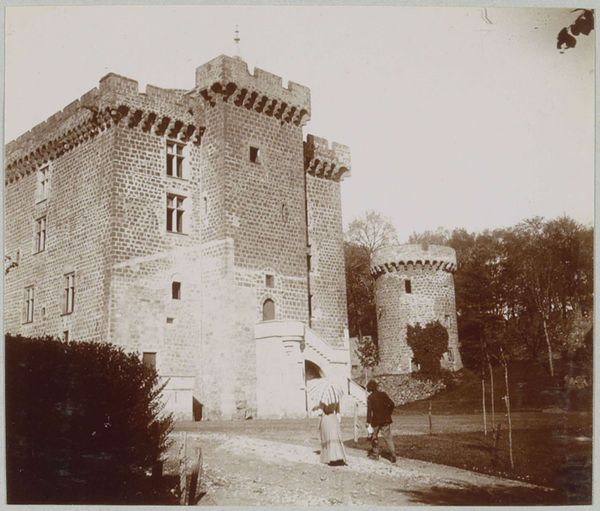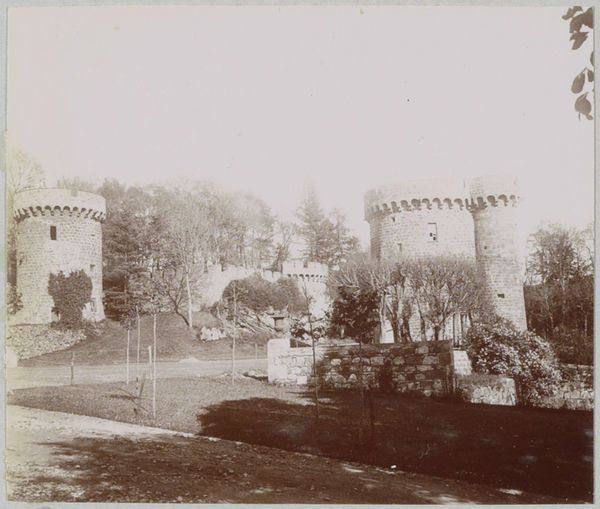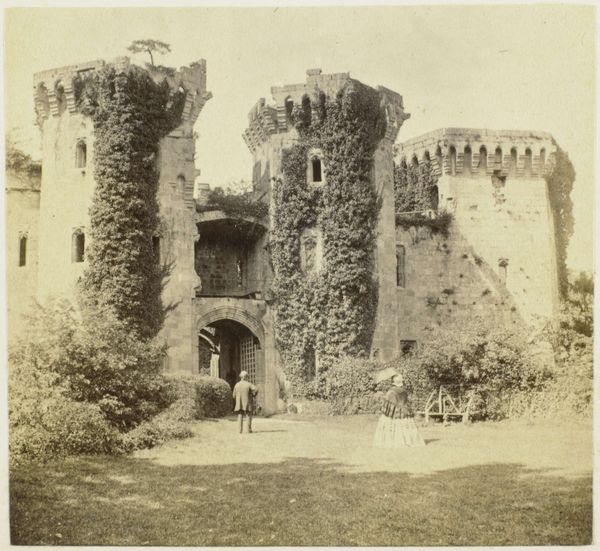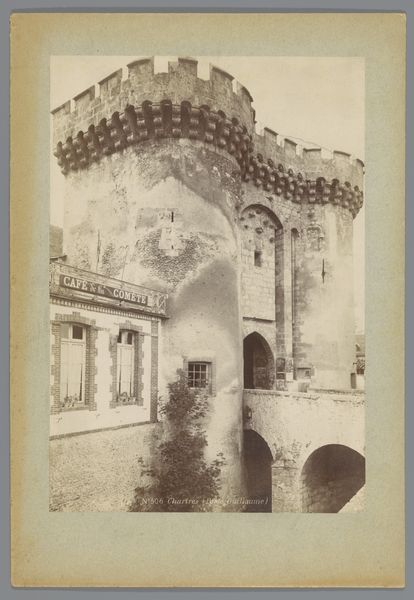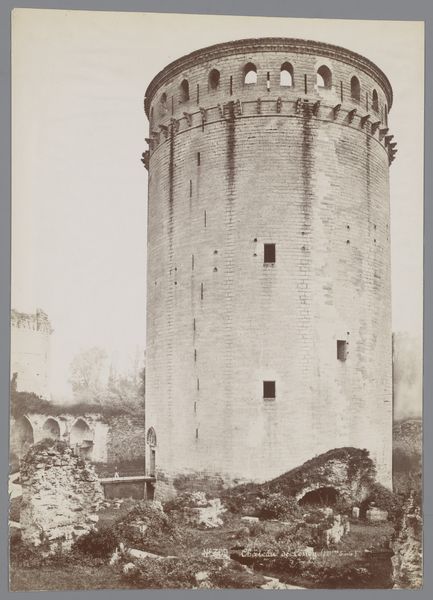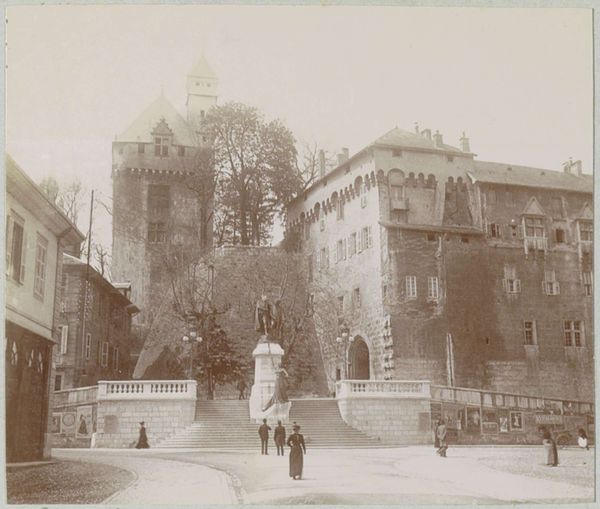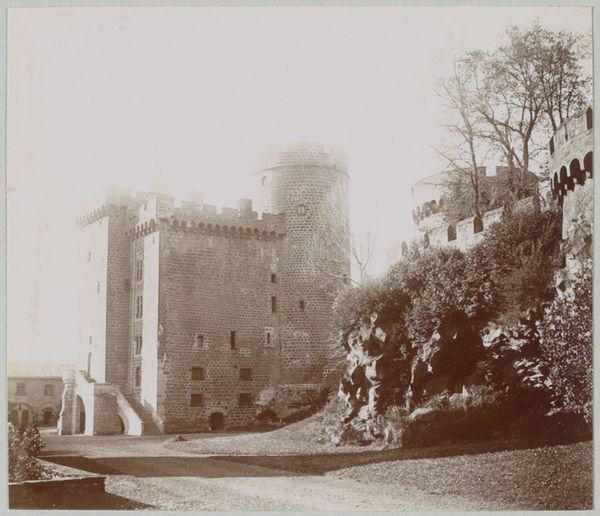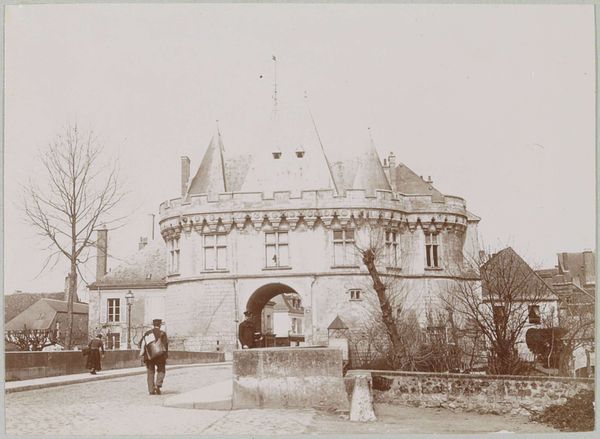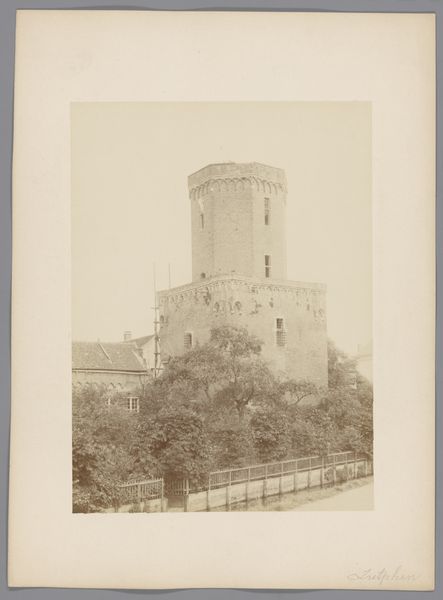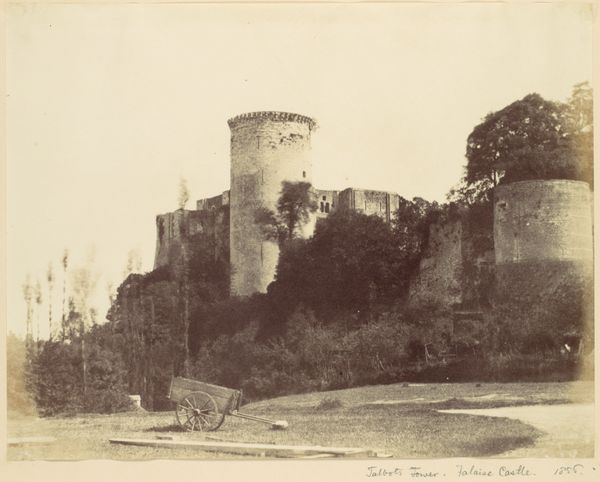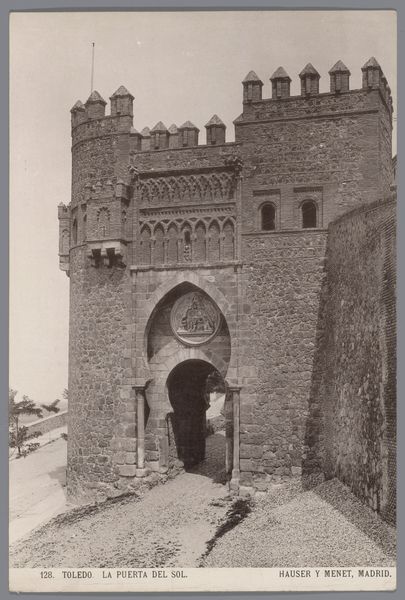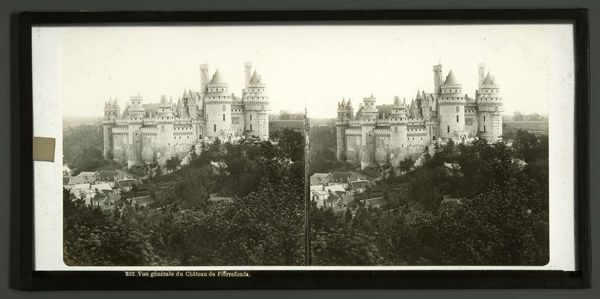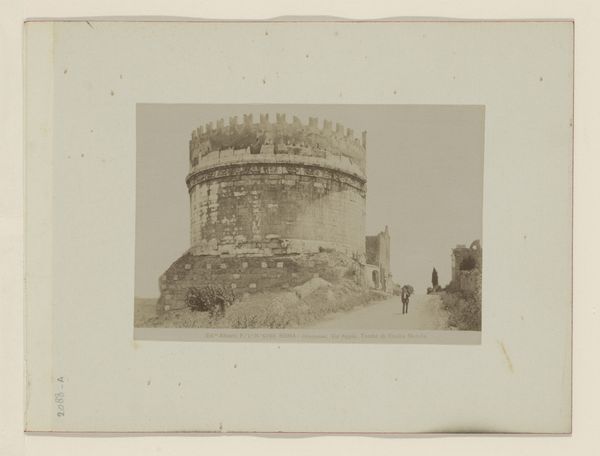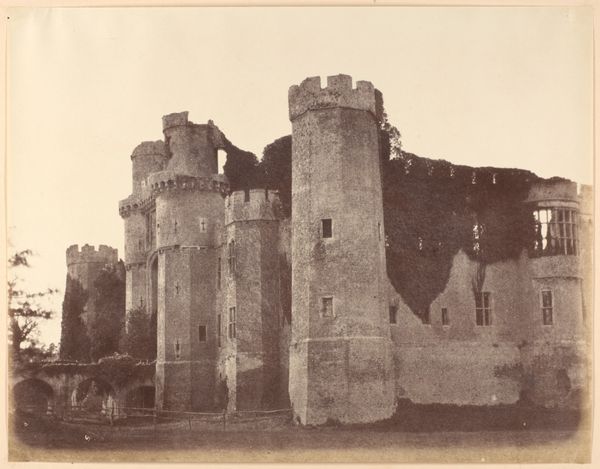
photography, architecture
#
landscape
#
photography
#
cityscape
#
architecture
Dimensions: height 275 mm, width 214 mm
Copyright: Rijks Museum: Open Domain
Curator: This gelatin silver print, created sometime between 1870 and 1890, captures a view of the tower nestled within the gardens of Villa Pallavicini in Pegli. Editor: My first impression is one of melancholic grandeur. The softness of the sepia tones and the slightly obscured view create this sense of faded glory. There is an echo of the past here. Curator: It's fascinating how photography at this time documented architecture. We are not just seeing a structure, but engaging with a moment of how leisure and privilege were constructed and consumed. Consider the picturesque ideal – this manufactured ruin as a stage for experiencing simulated history. Editor: Absolutely, the socio-political context is palpable. Who has access to this space, to the beauty it offers, becomes a critical question. It’s never simply about aesthetics, is it? The architecture is not neutral, neither is the photographic record. It begs the question – how complicit were these early photographers in constructing and perpetuating social hierarchies through image making? Curator: Precisely. And how does the staging here contribute? The overgrowth feels intentionally arranged to emphasize a sense of decay. Was the garden a place of empowerment or also of repression? What labour made possible this landscape? The tower itself acts as a sentinel, its height and style representing status. Editor: I am drawn to the implied contrast: that spiral staircase seemingly floating up the tower's side gives the image such a lovely sense of depth. But more importantly, how did architectural photography like this shape the popular imagination? What fantasies of power and wealth were propagated through such images? It speaks volumes, silently. Curator: The print raises far more than it answers. But at its core is this: photographs like these show that the Villa was always staged in a certain way to be represented and interpreted. What can it reveal of 19th century aesthetics and even its biases? Editor: Exactly. Viewing it now, we realize that what seems like a straightforward photograph is layered with complex narratives around class, gender, and historical memory. It makes me want to dive even deeper into the Villa's past.
Comments
No comments
Be the first to comment and join the conversation on the ultimate creative platform.
